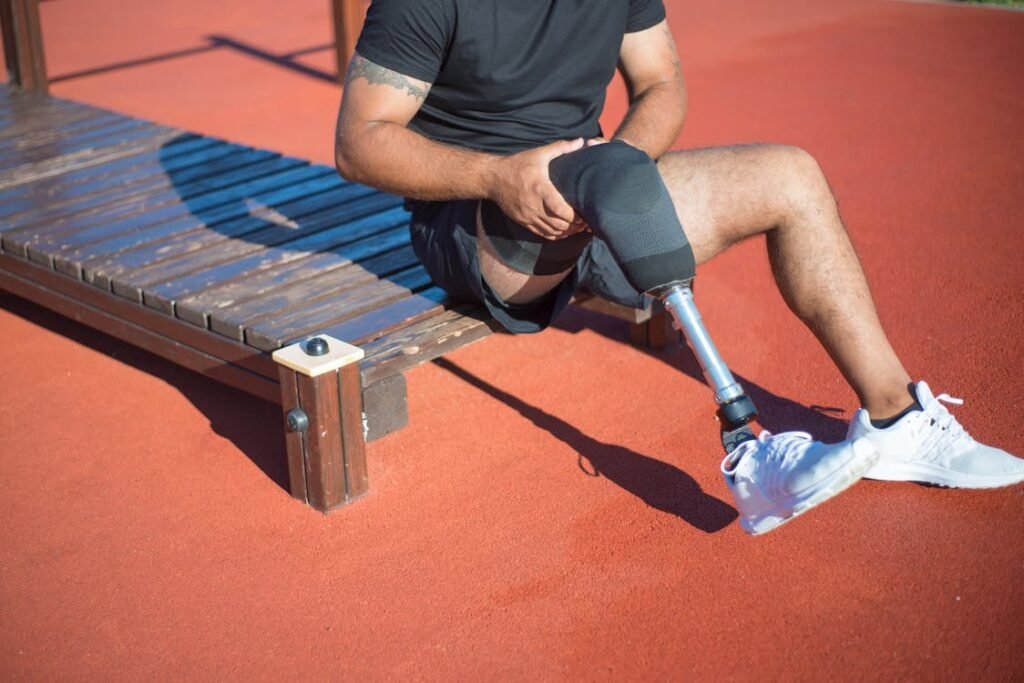Losing a limb is life-changing, and choosing the right prosthetic is an important decision. Many people considering a prosthetic limb wonder if investing in a bionic limb is worth the cost. While traditional prosthetics are more affordable and have been used for decades, bionic limbs offer advanced features, better control, and a more natural experience.
But do the benefits of bionic prosthetics justify the higher price? Are they a smart long-term investment? Understanding the financial aspects, maintenance costs, and overall value of both traditional and bionic prosthetics can help you make an informed choice.

Understanding the Cost of Traditional Prosthetics
Traditional prosthetics have been around for a long time, providing people with a simple and effective way to regain mobility after limb loss.
These prosthetics do not use electronics or advanced technology, which makes them more affordable compared to bionic limbs. However, their costs still vary depending on factors such as materials, customization, and level of function.
A basic traditional prosthetic consists of a socket, a limb structure, and a mechanical joint if needed. The materials used in making these prosthetics affect the price significantly.
Standard materials like plastic and metal components are more affordable, while high-performance materials like carbon fiber or lightweight alloys increase the cost.
For upper limb prosthetics, body-powered designs are among the most common. These rely on cables and harnesses to control movement.
While they provide good durability, they require physical effort to operate, which can lead to muscle strain over time. Their cost is generally lower than that of myoelectric or bionic alternatives, making them a practical choice for those looking for a budget-friendly option.
For lower limb prosthetics, traditional options include basic mechanical knees and feet, which provide stability but lack adaptability. While they enable movement, they do not adjust automatically to different terrains or walking speeds.
Higher-end traditional prosthetics may include energy-returning feet or hydraulic knee joints, which improve comfort and mobility but come at a higher cost.
The Long-Term Costs of Traditional Prosthetics
Although traditional prosthetics have a lower upfront cost, they come with long-term expenses. Since they rely on mechanical components, they may require frequent adjustments or replacements.
Over time, the residual limb can change in size due to muscle loss or weight fluctuations, requiring new socket fittings.
Another cost factor is wear and tear. Mechanical joints, cables, and harnesses can degrade over time, leading to maintenance and repair expenses. While traditional prosthetics are built to last, regular use can result in breakdowns that require professional servicing.
Additionally, traditional prosthetics do not provide the same level of movement as bionic limbs. This means that users may need to compensate by using more energy or developing alternative movement strategies, which can lead to discomfort or long-term physical strain.
While they are a good short-term solution, some users eventually transition to bionic limbs for greater ease of movement and functionality.

Understanding the Cost of Bionic Prosthetics
Bionic prosthetics are the most advanced type of artificial limbs available today. Unlike traditional prosthetics, which rely on mechanical movement, bionic limbs use electronic sensors, motors, and microprocessors to create a more natural and intuitive experience.
These high-tech features make bionic prosthetics more expensive upfront, but they also offer greater functionality, comfort, and independence.
The cost of a bionic prosthetic depends on several factors, including the level of technology, the number of moving parts, and the type of sensors used.
A basic bionic hand, for example, may have simple open-and-close functions, while a more advanced model may offer multiple grip patterns, pressure-sensitive fingertips, and AI-driven adaptability.
Similarly, a bionic leg with a microprocessor-controlled knee and ankle will cost more than a basic electronic prosthetic that only offers limited motion.
One of the key reasons for the higher cost of bionic prosthetics is the research and development involved in their creation. These devices are designed using cutting-edge technology that mimics human movement, providing a more natural experience for the user.
Unlike traditional prosthetics, which are mostly passive, bionic limbs actively respond to the user’s muscle signals, making movement feel more fluid and effortless.
The Long-Term Costs of Bionic Prosthetics
While the initial cost of a bionic limb is higher, it is important to consider the long-term value it provides. Bionic limbs are designed to reduce strain on the body by allowing smoother, more efficient movement.
This can prevent secondary health issues like joint pain, muscle fatigue, and posture problems, which can develop when using a traditional prosthetic that does not move naturally.
One factor that affects the long-term cost is battery maintenance. Since bionic prosthetics rely on power to operate, users must ensure that batteries are charged regularly.
While most batteries last for an entire day, they may need to be replaced after a few years, adding to the long-term cost.
Another consideration is software updates and technical servicing. Some bionic prosthetics require periodic calibration to ensure that sensors and motors function correctly.
However, unlike traditional prosthetics that may need frequent physical adjustments, bionic limbs can often be fine-tuned using software updates, reducing the need for repeated manual modifications.
Despite these costs, many users find that the benefits of a bionic limb outweigh the investment. The ability to move naturally, perform complex tasks, and experience a more comfortable fit leads to a higher quality of life.
In the long run, this can make bionic prosthetics a more cost-effective option, particularly for individuals who want to maintain an active and independent lifestyle.

Comparing the Value: Are Bionic Limbs Worth the Investment?
When considering the cost of bionic prosthetics versus traditional ones, it is essential to look beyond just the initial price tag. The true value of a prosthetic limb comes from its ability to improve a user’s quality of life, enhance daily function, and provide long-term benefits.
While bionic prosthetics require a larger upfront investment, they offer advantages that can make them a better long-term solution for many users.
Improved Functionality and Independence
One of the most compelling reasons people choose bionic limbs is the significant improvement in functionality. Traditional prosthetics, especially body-powered ones, require considerable physical effort to operate.
This can lead to fatigue, discomfort, and limitations in performing precise tasks. Bionic prosthetics, however, use advanced technology to make movement smoother and more natural.
For example, a bionic hand with multiple grip patterns allows a user to perform tasks like holding a pen, using a smartphone, or picking up a delicate object with precision.
A traditional prosthetic hand, by contrast, may only offer a basic open-and-close function, making these tasks more difficult or even impossible.
Similarly, bionic legs with microprocessor-controlled joints adapt to walking speed and terrain changes. This reduces strain on the rest of the body and provides a more fluid walking experience.
Traditional prosthetic legs, while effective, do not offer this level of adaptability, making movement more physically demanding over time.
Long-Term Cost vs. Benefit
Although bionic limbs cost more upfront, they can be a smarter financial decision in the long run. Traditional prosthetics often require frequent adjustments and replacements due to wear and tear, changes in the residual limb, or discomfort caused by outdated designs.
These ongoing expenses can add up over time, making the initial savings less significant in the long run.
Bionic prosthetics, while requiring battery maintenance and occasional servicing, often last longer before needing a full replacement.
Their adaptive technology reduces strain on the user’s body, potentially preventing health issues related to improper movement, such as joint pain or back problems.
Over time, these health benefits may offset the initial cost by reducing medical expenses associated with secondary injuries.
Comfort and Adaptability
A prosthetic limb should not only function well but also feel comfortable for the user. Many traditional prosthetics, especially body-powered ones, can cause strain on other muscles due to the force required to operate them.
Over time, this can lead to discomfort, muscle soreness, and even long-term physical strain.
Bionic limbs, on the other hand, are designed to work with the user’s body rather than against it. By using muscle signals to control movement, they reduce the physical effort required to operate them.
Some bionic hands even include sensory feedback, allowing users to feel the pressure of objects they are holding, making interactions feel more natural.
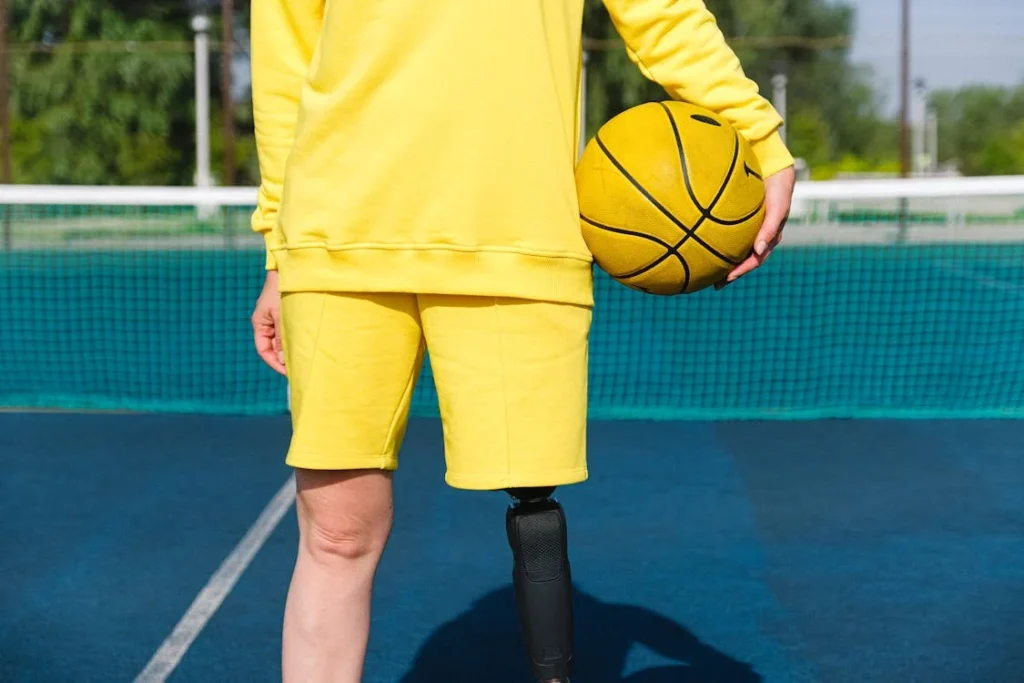
Who Should Invest in a Bionic Prosthetic?
While bionic prosthetics offer advanced features and improved functionality, they may not be the right choice for everyone. The decision to invest in a bionic limb depends on several factors, including lifestyle, daily needs, career demands, and personal preferences.
Understanding who benefits the most from a bionic prosthetic can help determine whether it is a worthwhile investment.
People with Active Lifestyles
For individuals who lead active lives, a bionic prosthetic can be a game-changer. Athletes, fitness enthusiasts, and people who engage in physically demanding jobs benefit from the adaptability and responsiveness of bionic limbs.
Since these prosthetics adjust in real time, they allow for smoother movements and better shock absorption, reducing strain on the body.
For upper limb prosthetic users, a bionic hand that offers multiple grip patterns and intuitive control can make complex tasks easier.
From weightlifting to playing an instrument, a bionic limb allows users to participate in activities that would be difficult with a basic mechanical prosthetic.
Professionals Requiring Precision and Dexterity
Many careers require fine motor skills, precision, and ease of movement. For individuals working in fields like technology, engineering, medicine, or the arts, a bionic limb can significantly enhance their ability to perform tasks.
For example, a surgeon or technician may need a high level of control when using tools, something that a traditional prosthetic may not provide.
A bionic hand with customizable grip patterns and responsive movement allows for more natural interactions, making it easier to handle objects with precision.
Similarly, office workers who rely on computers, writing, or customer interactions may find that a bionic limb improves efficiency and comfort throughout the day. The ability to type, use a touchscreen, or shake hands naturally can boost confidence and performance in the workplace.
People Who Prioritize Comfort and Long-Term Use
Comfort plays a huge role in whether a prosthetic limb is practical for everyday use. Individuals who experience discomfort with traditional prosthetics may find that bionic limbs offer a more natural and ergonomic experience.
Since bionic limbs rely on muscle signals and microprocessor-controlled movements, they reduce strain on the body and allow for smoother operation.
For lower limb users, a bionic leg with a microprocessor knee and ankle adjusts to different walking conditions, making movement more fluid and reducing the risk of joint pain.
Over time, this can prevent health issues such as hip misalignment or spinal problems that sometimes develop from overcompensating with a traditional prosthetic.
People Looking for Long-Term Value
Although bionic limbs require a larger upfront investment, they often provide better long-term value.
Individuals who plan to use their prosthetic for many years may find that a bionic limb saves money in the long run by reducing the need for replacements, adjustments, and medical treatments related to strain or injury.
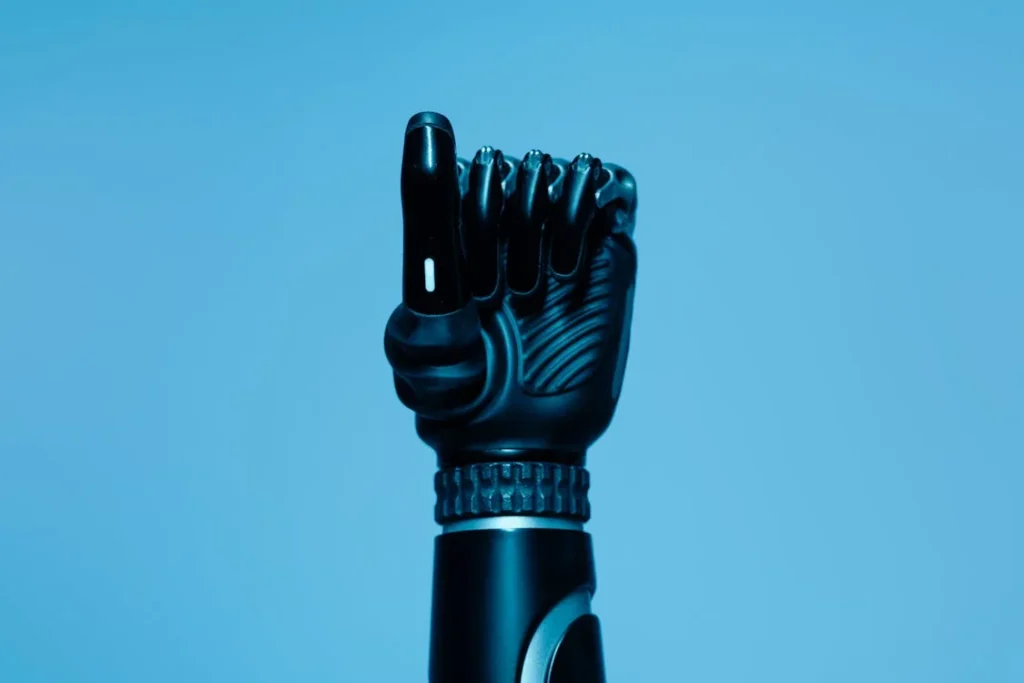
Making the Final Decision: Is a Bionic Limb the Right Investment for You?
Deciding between a traditional and a bionic prosthetic is not just about cost—it is about quality of life. While traditional prosthetics offer affordability and reliability, bionic limbs provide advanced movement, greater comfort, and a more natural user experience.
The right choice depends on personal needs, daily activities, and long-term goals.
Assessing Your Daily Needs
The best way to determine whether a bionic prosthetic is worth the investment is to evaluate how often you will use it and what tasks you need it for.
If your prosthetic is mainly for simple, occasional use, a traditional limb may be sufficient. However, if you rely on your prosthetic for work, mobility, or complex activities, a bionic limb can provide the efficiency and ease needed for a better daily experience.
For individuals who need fine motor control, such as those who work with tools, use computers, or engage in artistic activities, a bionic hand offers superior precision.
Similarly, for lower limb amputees who walk long distances or need to navigate uneven terrain, a bionic leg provides smoother movement and better shock absorption.
Weighing Short-Term Costs vs. Long-Term Benefits
A common concern when choosing a bionic limb is the higher initial cost. However, looking at the long-term benefits can help put the investment into perspective.
A traditional prosthetic may cost less upfront, but over time, it may require more frequent replacements, socket adjustments, and maintenance due to wear and tear.
Additionally, the physical strain caused by a traditional prosthetic can lead to medical expenses for treating joint pain, back problems, or muscle fatigue.
On the other hand, a bionic prosthetic, while initially more expensive, can reduce these long-term costs by offering a better fit, improved functionality, and less strain on the body.
Many users find that the increased independence and ease of movement make the investment worthwhile.
Considering Financial Assistance and Payment Options
For those concerned about affordability, exploring financial aid options can help make bionic prosthetics more accessible.
Some insurance providers cover part of the cost of bionic limbs, while government programs, charitable organizations, and assistive technology grants can provide financial assistance.
Additionally, some prosthetic manufacturers, including Robobionics, offer flexible payment plans to help users afford high-quality prosthetic solutions.
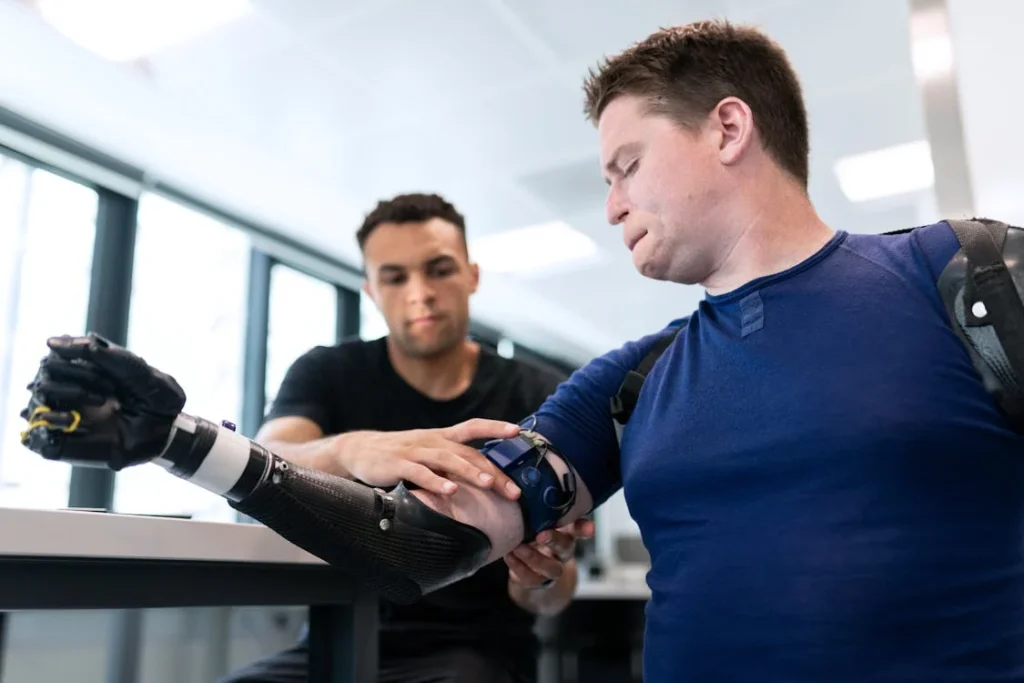
The Psychological and Emotional Value of Bionic Prosthetics
Beyond functionality and cost, one of the most overlooked aspects of choosing a prosthetic limb is its psychological and emotional impact. The way a person feels about their prosthetic affects not only their confidence but also their willingness to wear and use it regularly.
While both traditional and bionic prosthetics restore mobility, bionic limbs often provide a stronger emotional connection due to their advanced capabilities and natural movement.
Restoring a Sense of Normalcy
For many individuals, losing a limb is not just a physical challenge but also an emotional one. Everyday actions that once felt effortless—such as holding a loved one’s hand, walking with a natural stride, or picking up a cup—become difficult.
Traditional prosthetics offer a way to regain some of this function, but their limited movement and mechanical feel can sometimes serve as a reminder of what was lost.
Bionic prosthetics, on the other hand, help users regain a greater sense of normalcy. With responsive grip control, adjustable walking speed, and even sensory feedback in some models, bionic limbs allow for more fluid and intuitive movement.
This can make users feel more like themselves again, reducing frustration and improving overall well-being.
The Confidence Boost of Advanced Technology
There is also a psychological benefit in using cutting-edge technology. Bionic limbs, with their sleek designs and robotic precision, are seen as symbols of progress and empowerment.
Many users feel proud of their bionic prosthetic, viewing it as a piece of advanced engineering rather than just a medical device.
This boost in confidence can have a ripple effect on various aspects of life.
Users may feel more comfortable in social settings, more motivated to participate in physical activities, and even more willing to pursue career opportunities they might have hesitated to take on before.
The ability to move naturally and perform tasks with ease can make a person feel capable and independent, reducing self-consciousness about their prosthetic.
Overcoming Psychological Barriers to Adaptation
Adjusting to a prosthetic limb, whether traditional or bionic, takes time. Some individuals struggle with feeling “different” or worry about how others perceive them. This emotional barrier can sometimes lead to rejection of a prosthetic, even if it offers functional benefits.
Bionic limbs help address this challenge by making the transition smoother. Because they closely mimic natural movement, they feel more like an extension of the body rather than a separate device.
Some advanced prosthetics even integrate with mobile apps, allowing users to personalize movement settings and track progress, which can create a sense of control and ownership over their prosthetic experience.
At Robobionics, we believe that a prosthetic should not just restore movement—it should restore confidence.
That is why we design bionic solutions like Grippy™ with user experience in mind, ensuring that every individual can embrace their prosthetic as a powerful tool for both function and self-expression.
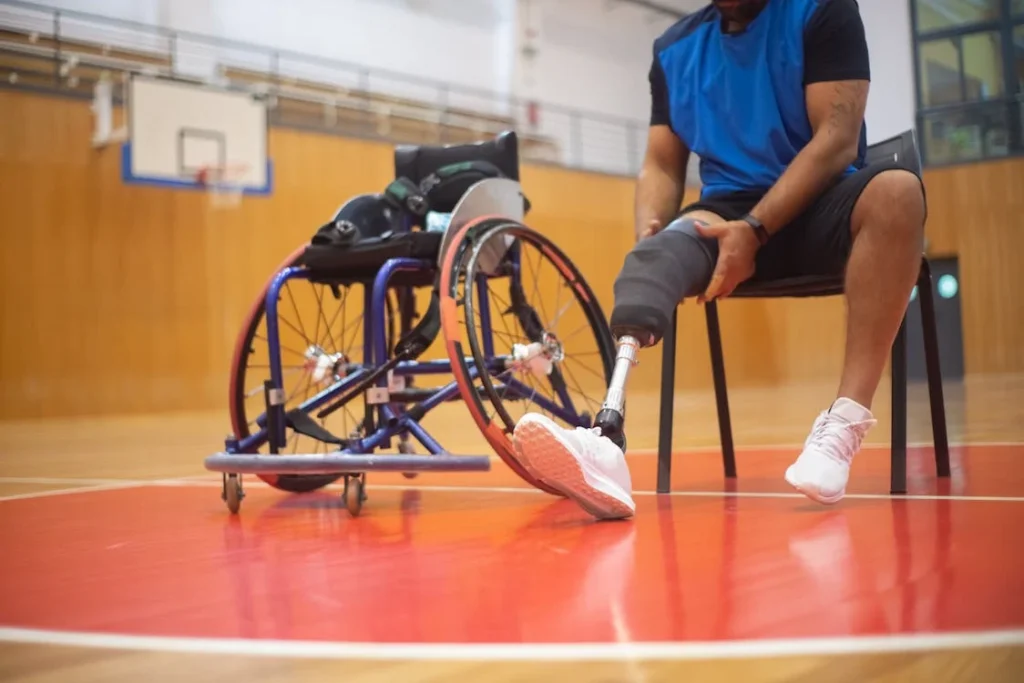
The Role of Rehabilitation in Maximizing the Value of a Bionic Limb
Investing in a bionic prosthetic is not just about purchasing the most advanced technology—it is also about learning how to use it effectively.
Rehabilitation plays a crucial role in ensuring that users get the most out of their prosthetic, improving both functionality and long-term satisfaction.
A well-designed bionic limb can only reach its full potential if the user is properly trained in how to control and integrate it into daily life.
Learning to Control a Bionic Limb
Unlike traditional prosthetics, which rely on mechanical movement or body-powered harnesses, bionic limbs use myoelectric sensors that detect muscle signals to initiate movement.
This requires users to develop muscle control and coordination to operate their prosthetic smoothly. At first, this can feel unnatural, but with guided training, users can refine their control, making movements feel more intuitive.
For instance, someone using a bionic hand must learn how to activate different muscle groups to switch between grip patterns. A person with a bionic leg must practice weight distribution and walking rhythm to take advantage of microprocessor-controlled adjustments.
Rehabilitation sessions help users develop these skills, ensuring that they can perform tasks naturally and efficiently.
Reducing Fatigue and Improving Comfort
One of the major advantages of bionic limbs is that they reduce strain on the body compared to traditional prosthetics. However, without proper rehabilitation, users may develop inefficient movement patterns that cause unnecessary fatigue.
Physical therapy helps users optimize their posture, balance, and gait to make movement as effortless as possible.
For lower-limb prosthetic users, training often includes exercises to strengthen the surrounding muscles, improving stability and reducing the risk of falls.
For upper-limb users, grip training and fine motor skill exercises help refine control, making everyday tasks easier. The more a person practices using their bionic limb correctly, the more natural and comfortable it becomes.
Overcoming Mental Barriers to Adaptation
The transition to a bionic prosthetic is not just physical—it is also mental. Some users may initially feel frustrated when learning to use their new limb, especially if they have relied on a traditional prosthetic for years.
Others may hesitate to use their bionic limb in public due to self-consciousness.
Rehabilitation helps users build confidence in their prosthetic by setting achievable goals and tracking progress. Many rehabilitation programs now incorporate gamified training, turning exercises into interactive challenges that make learning fun and engaging.
At Robobionics, we integrate home-based gamified rehabilitation programs, allowing users to practice their skills in a relaxed and enjoyable way.
Long-Term Training for Continuous Improvement
Even after a user becomes comfortable with their bionic limb, ongoing training can help refine movements and adapt to new challenges. As technology evolves, software updates may introduce new features that require additional training.
Regular check-ins with prosthetists and physical therapists ensure that the prosthetic remains well-adjusted to the user’s needs.
By committing to proper rehabilitation, users can maximize the value of their bionic limb, making it not just an advanced piece of technology but a seamless extension of their body.
The combination of cutting-edge prosthetic design and effective training ensures that users experience the full benefits of their investment, leading to greater independence, confidence, and ease of movement.
Conclusion
Deciding whether a bionic prosthetic is worth the investment depends on individual needs, lifestyle, and long-term goals. While traditional prosthetics offer affordability and reliability, bionic limbs provide advanced movement, greater comfort, and improved adaptability. The higher upfront cost of bionic prosthetics is often balanced by their ability to reduce physical strain, enhance daily function, and improve overall quality of life.
Beyond the financial aspect, the emotional and psychological benefits of bionic limbs play a crucial role. The ability to move naturally, regain independence, and participate in everyday activities with confidence makes a significant difference for many users. When combined with proper rehabilitation and training, bionic prosthetics become more than just assistive devices—they become a seamless extension of the body.
At Robobionics, we are committed to making high-quality bionic prosthetics more accessible and affordable. Our innovative solutions, like Grippy™, offer users a blend of advanced technology, comfort, and reliability at a competitive price. If you are considering a bionic prosthetic and want to experience its benefits firsthand, book a free demo today. Our team is here to guide you every step of the way, helping you regain mobility, independence, and confidence in your daily life.



